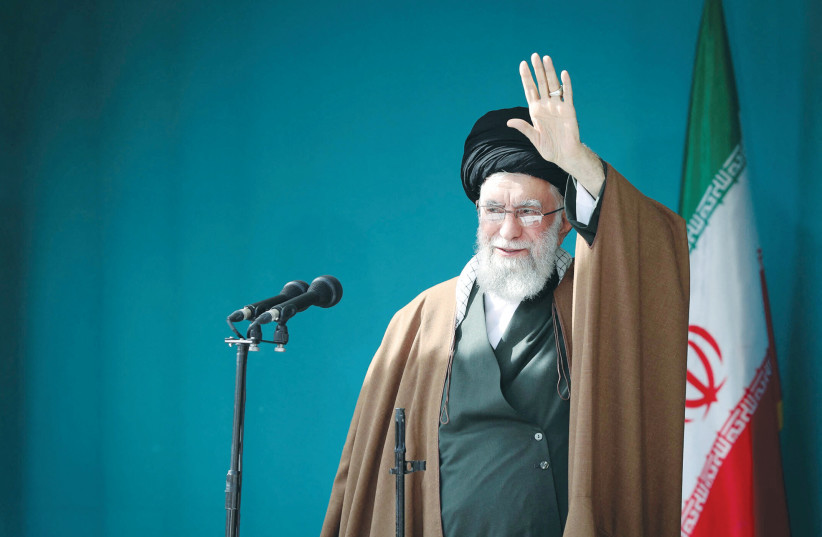The IDF has decided how it will counter-strike Iran and its proxies but has not yet settled on the timing; multiple sources told The Jerusalem Post on Tuesday.
Because the timing is still variable and because of all the necessary complex preparations, the current decision could change.
However, the very development of a decision shows the severity and determination of Israel’s leadership to strike back, though all indications are that Jerusalem still seeks to tamp down the attack to avoid spiraling into a regional war.
IDF Chief of Staff Lt.-Gen. Herzi Halevi hinted that the timing of the attack was not very imminent during a visit to the Arrow air defense battery of Battalion 136.
He said, “We are enabling a home front policy to at least give citizens this Passover week to live almost like normal because we completely trust you and your readiness.”

It is also possible that Halevi, Home Front command policies, and other officials keeping their regular schedules are part of a clever fake-out to get Iran and its proxies to lower their guard.
But at least the plain reading of the relevant signals suggests that a major attack is not imminent in the coming days and could even be postponed for longer.
Speculated options for an attack range from going big – striking Iranian nuclear facilities – to the middle of the road – striking drone or ballistic missile facilities that were directly involved in Iran’s strike – to more limited options – assassinating specific individuals or punishing IRGC officials abroad along with their accomplices; or, a mix of some of the above with a large cyber attack.
Still, some signals indicated that the Air Force would be involved in an unusually significant target.
Defense Minister Yoav Gallant on Tuesday said, “The Iranians failed in their attack, and they will fail to deter Israel. The skies of the Middle East are wide open for the [Israeli] air force. Every enemy that comes after us will be struck wherever they are.”
Israel was attacked by over 500 aerial threats on Sunday
He also revealed that Israel was attacked by over 500 aerial threats on Sunday morning, encompassing both Iran and its proxies.
Until now, officials estimated 300-350 aerial threats, including around 120 ballistic missiles, 170 drones, and 30 cruise missiles. However, Hezbollah also participated in rocket fire, and Yemen, Syria, and Iraqi militia groups likely participated as well.
Gallant’s statement is the first public indication that quantifies aerial threats. The aerial threats continued from Hezbollah on Tuesday. The IDF announced it assassinated Ismail Yusef Baz, a senior Hezbollah commander for the Lebanon coastal region, equivalent to the rank of an Israeli brigade commander.
According to the military, Baz served for decades with Hezbollah in a variety of posts before becoming a coastal commander. Among his various roles was managing both rocket and anti-tank missile attacks into Israel.
He also masterminded various terror operations against Israel. Baz continues the list of close to a dozen senior Hezbollah officials killed by Israel since October 7; a smaller number of them were at the rank of brigade commander.
Hezbollah on Tuesday launched two attack drones, injuring three people, according to media reports. The military said the drones hit areas near Beit Hillel.
Hezbollah fired more rockets across northern Israel. The IDF responded with air strikes and artillery fire.
The IDF also announced a drill for the northern region to test the interface between its cyber and technology units and its Northern Command operational units.
This highlights how part of Israel’s response to Iran could be in the cyber domain. It is quite possible as well that an attack by the Jewish state will lead to a further counter-strike by Tehran and its senior proxy, Hezbollah.
Northern Command is responsible for handling threats from Hezbollah and was in Iran’s crosshairs on Saturday night.
During the drill, combat and cyber and technology forces deployed throughout the North on every separate front, to simulate readiness for an all-out hybrid digital and kinetic war.
Division 210 drilled specific scenarios for threats from Lebanon and Syria, while artillery Brigade 282 also participated in an emergency scenario. The special alpine unit for high mountains also participated, including training for urban fighting scenarios.
Iran’s attack came after Israel assassinated top Islamic Revolutionary Guard Corps commander Mohammed Reza Zahedi on April 1, who directed terror acts against Israel from Lebanon and Syria for years.
Meanwhile, in Gaza, Palestinian and Western news reported that the IDF had struck a building in the Tal as-Sultan neighborhood, west of Rafah, killing three Palestinians.
The military said Division 162 eliminated terrorists and destroyed terrorist infrastructure in a precise raid in the central Gaza Strip. Tanks killed numerous terrorists that were identified as advancing on soldiers.
Tovah Lazaroff and Jerusalem Post Staff contributed to this report.
